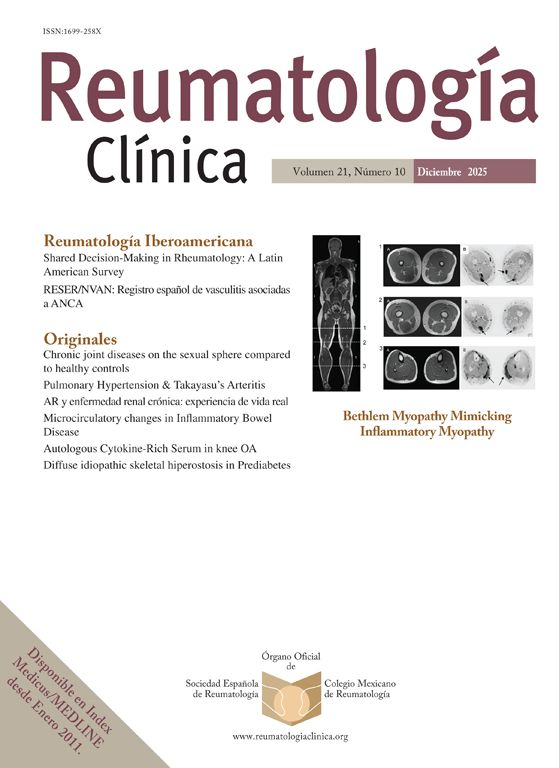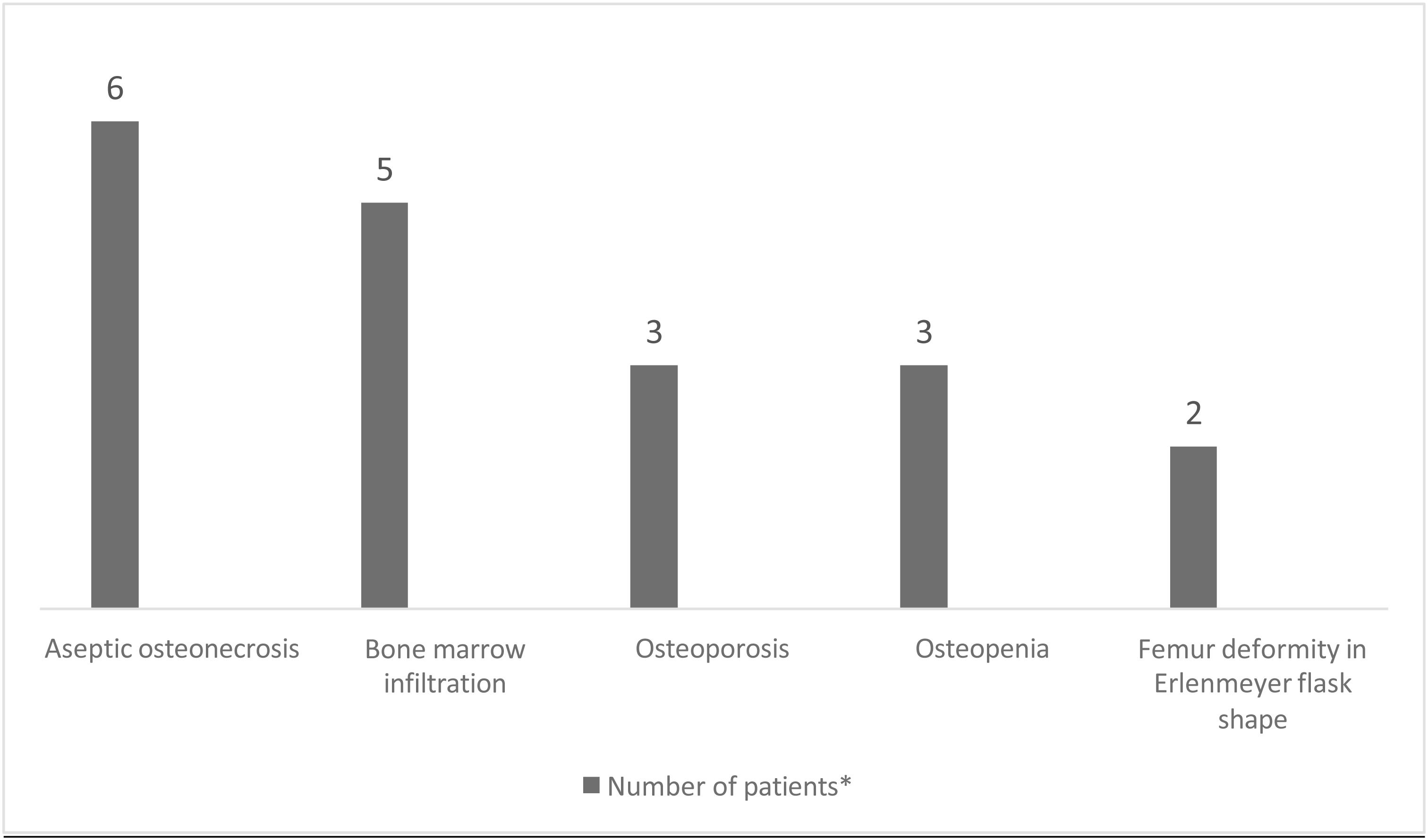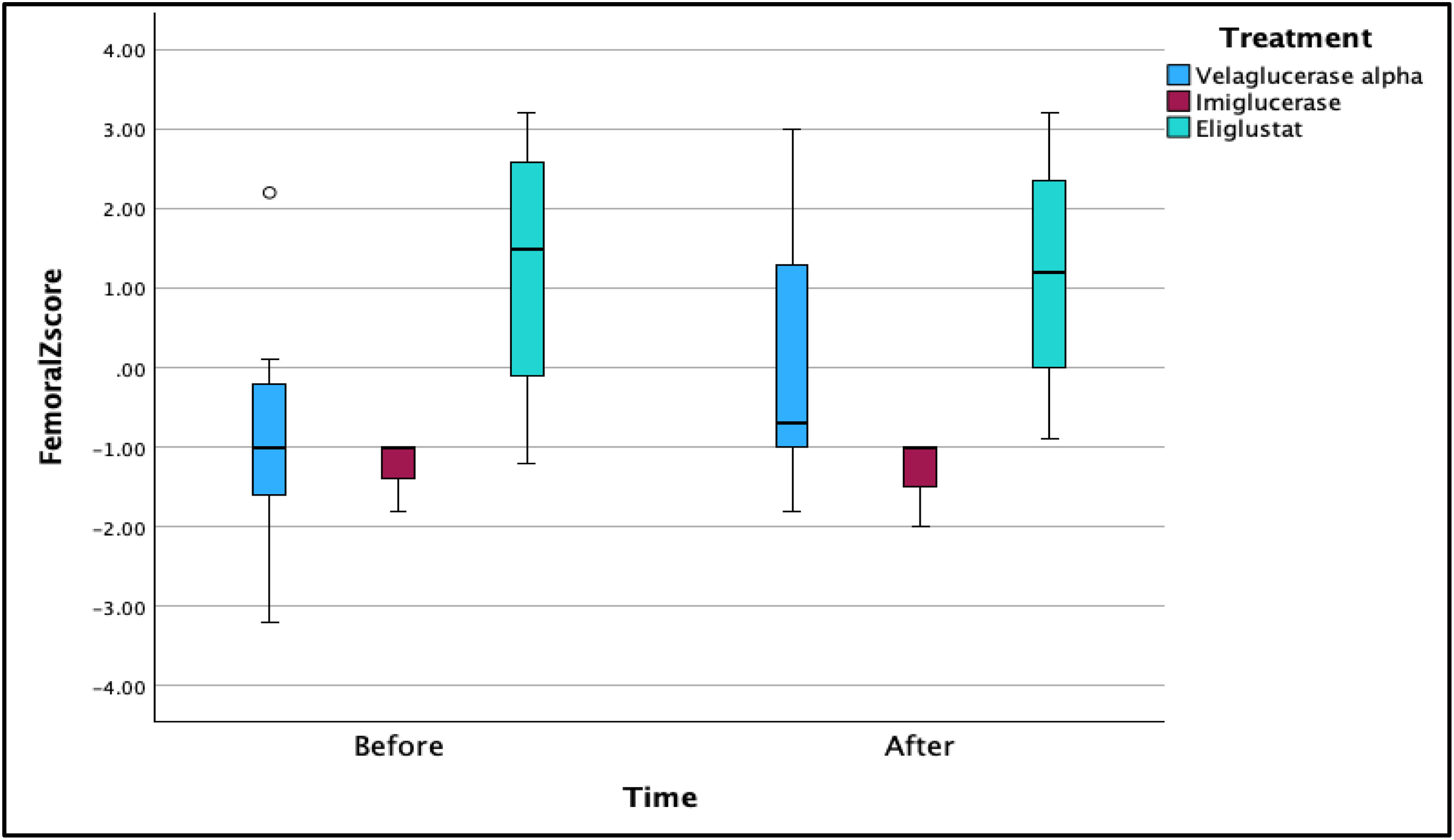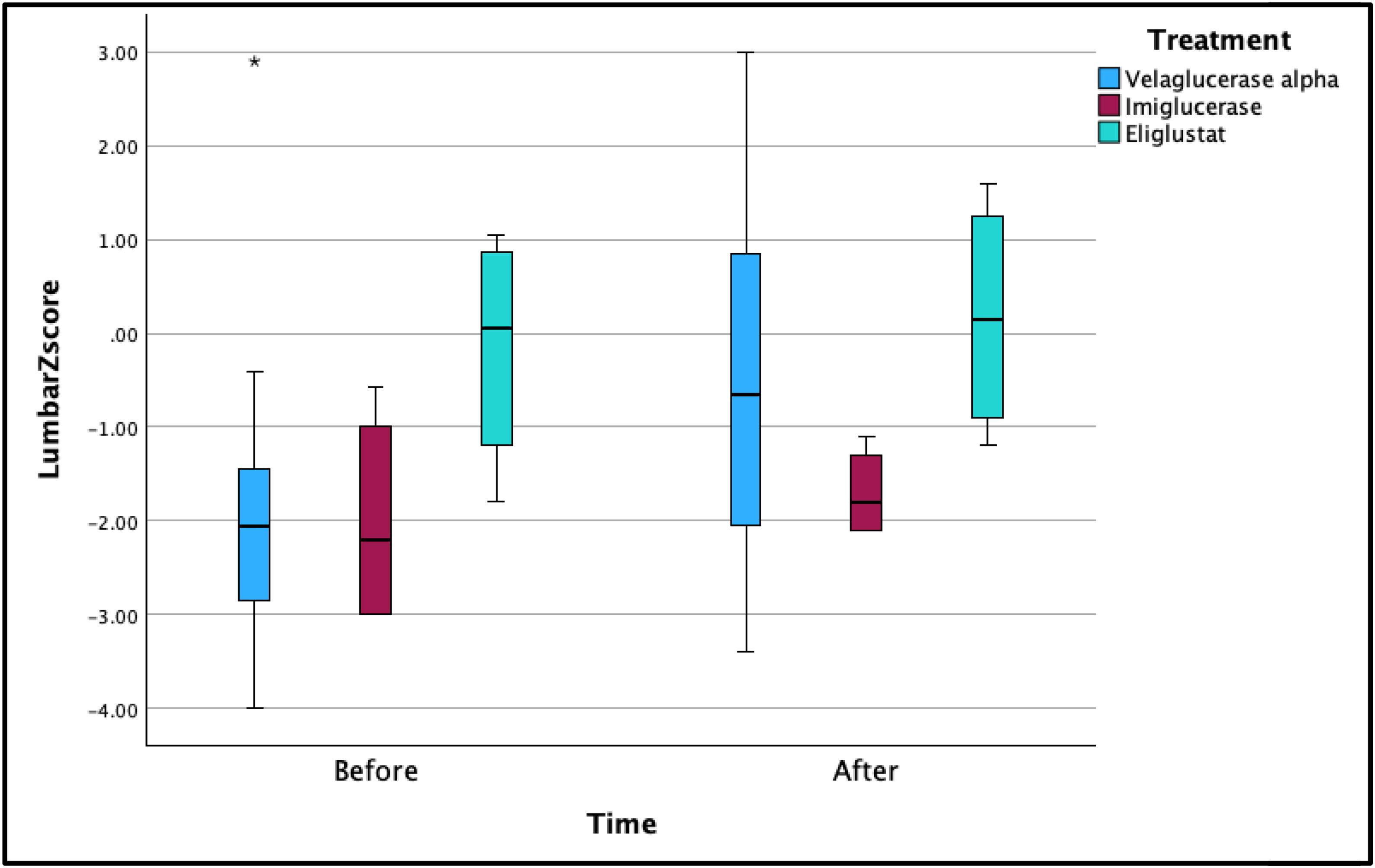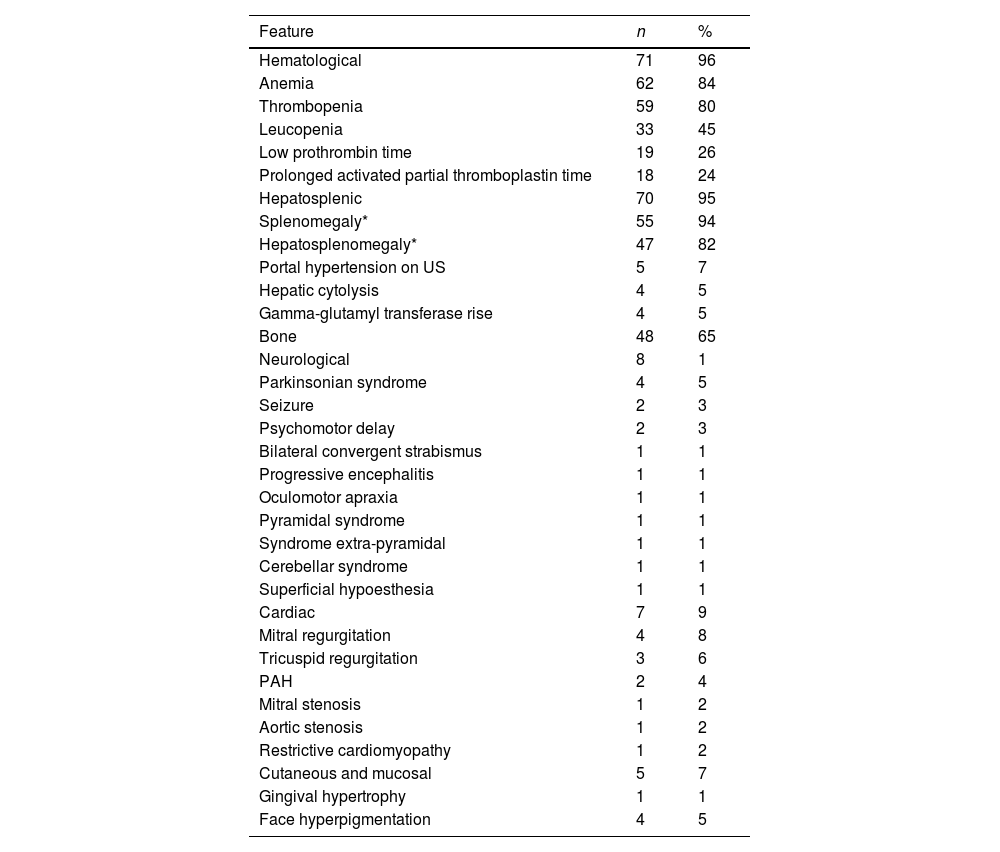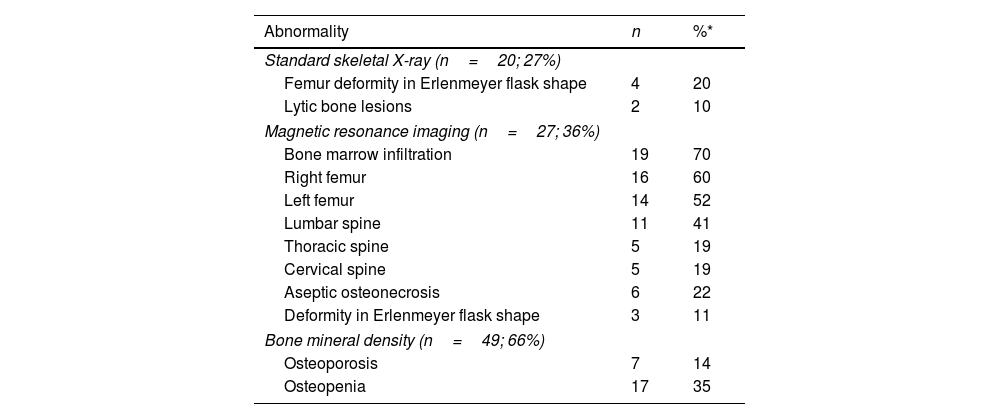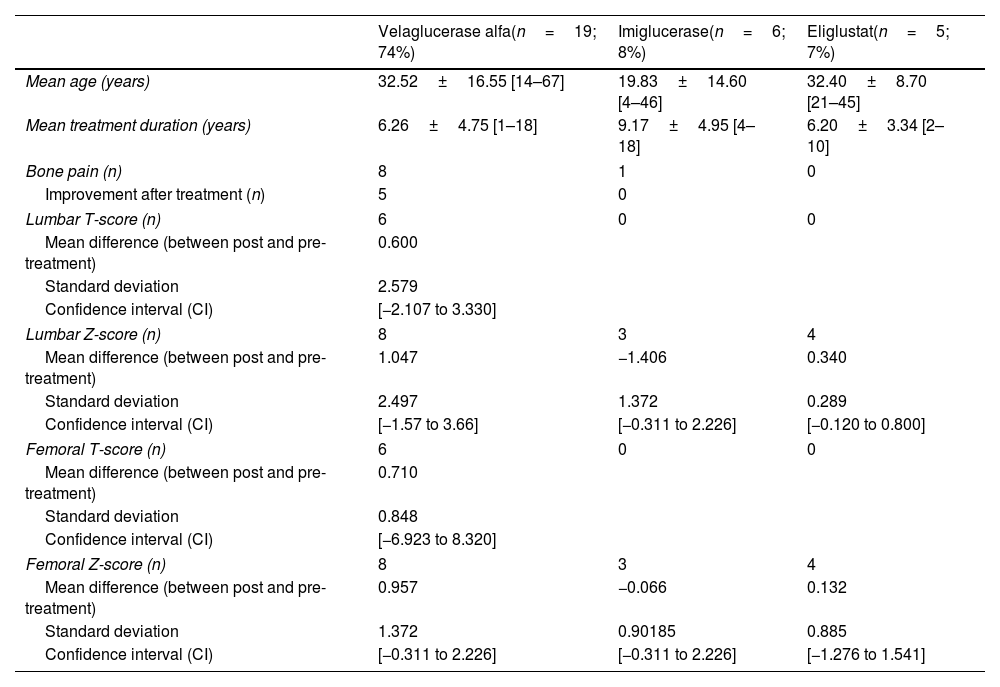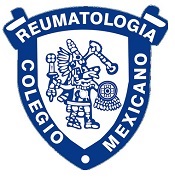Gaucher disease (GD) is characterized by an abnormal accumulation of glucocerebroside in the phagocytic cells due to an enzymatic deficiency in glucocerebrosidase. It is a systemic condition frequently associated with skeletal involvement. Our aim was to evaluate bone involvement (BI) in GD and to assess the impact of specific therapies for GD including enzyme replacement therapy (ERT) and substrate reduction therapy (SRT).
Patients and methodsData at diagnosis and at the final post-treatment follow-up was extracted from the Tunisian GD registry.
ResultsAmong the 74 included patients 48 had BI (65%), being the third most frequent disease feature. Seventeen patients reported experiencing bone pain crises (23%). Twenty-two patients had elevated alkaline phosphatases (30%), among which, 14 had BI (19%). Standard skeletal X-rays revealed femur deformity in Erlenmeyer flask shape in 4 patients and lytic bone lesions in 2 other patients for whom screening for malignancies was negative. Magnetic resonance imaging of the spine and lower limbs revealed bone marrow infiltration in 19 patients. Aseptic osteonecrosis was identified in 6 patients on MRI (22%). Bone mineral density demonstrated osteoporosis in 7 cases (14%) and osteopenia in 17 others (35%). Specific therapies for GD showed a trend towards improvement of bone pain (velaglucerase alfa) and bone densitometry parameters (velaglucerase alfa and eliglustat) at the final post-treatment follow-up, although formal statistical testing was not feasible due to small and heterogeneous subgroups.
Discussion and conclusionsWe presented descriptive data on BI derived from the Tunisian national Gaucher disease registry. This manifestation was common in our cohort. The limited size and heterogeneity of the treated subgroups precluded robust statistical comparisons. A major challenge in our setting is the delayed initiation of specific therapies, primarily due to late diagnosis and limited access to treatment.
La enfermedad de Gaucher (EG) se caracteriza por la acumulación anormal de glucocerebrósido en las células fagocíticas debido a un déficit enzimático de glucocerebrosidasa. Es una afección sistémica que con frecuencia se asocia con compromiso esquelético. Nuestro objetivo fue evaluar la afectación ósea (AO) en la EG y analizar el impacto de las terapias específicas para la EG, incluyendo la terapia de reemplazo enzimático (TRE) y la terapia de reducción de sustrato (TRS).
Pacientes y métodosSe extrajeron los datos al diagnóstico y en el seguimiento final postratamiento del registro tunecino de EG.
ResultadosEntre los 74 pacientes incluidos, 48 presentaban AO (65%), siendo la tercera manifestación más frecuente de la enfermedad. Diecisiete pacientes refirieron experimentar crisis de dolor óseo (23%). Veintidós pacientes mostraron elevación de la fosfatasa alcalina (30%), de los cuales 14 tenían AO (19%). Las radiografías óseas estándar revelaron deformidad femoral en matraz de Erlenmeyer en cuatro pacientes y lesiones líticas en dos pacientes, en quienes el cribado de neoplasias fue negativo. La resonancia magnética de columna y miembros inferiores mostró infiltración de médula ósea en 19 pacientes. La osteonecrosis aséptica se identificó en seis pacientes mediante resonancia magnética (RM) (22%). La densitometría ósea demostró osteoporosis en siete casos (14%) y osteopenia en otros 17 (35%). Las terapias específicas para la EG mostraron una tendencia hacia la mejoría del dolor óseo (velaglucerasa alfa) y de los parámetros de densitometría ósea (velaglucerasa alfa y eliglustat) en el seguimiento final postratamiento, aunque no fue posible realizar pruebas estadísticas formales debido al tamaño reducido y a la heterogeneidad de los subgrupos.
Discusión y conclusionesPresentamos datos descriptivos sobre la AO derivados del Registro Nacional Tunecino de la Enfermedad de Gaucher. Esta manifestación resultó frecuente en nuestra cohorte. El tamaño limitado y la heterogeneidad de los subgrupos tratados impidieron comparaciones estadísticas sólidas. Un desafío importante en nuestro entorno es el inicio tardío de las terapias específicas, principalmente debido al retraso diagnóstico y a la limitada accesibilidad al tratamiento.

